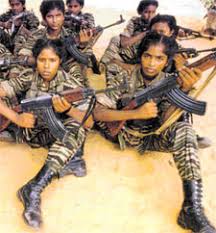THE LTTE – 4

Daya Gamage worked at the American Embassy in Colombo, as the Sole Foreign Service National and a Political Specialist. He retired in 1994 and has been living in Las Vegas since retirement. After two years of concentration, he has been able to share his knowledge, understanding and his intimate professional association with the US Department of State in the form of a book – ‘Tamil Tigers’ Debt to America’. Being aware of how America’s foreign policy worked- sometimes in a strange manner, he has come out with an unbiased text full of data in his book nowhere else is contained. Daya Gamage has authorised the writer to ” to quote anything from his book” so that the readers will get a clear picture of America’s Foreign Policy, Sri Lanka’s National Issues and the LTTE struggle in depth. Gamage handles the United States Bureau of the Online daily newspaper Asian Tribune constantly making the readers knowledgeable of the manner in which U.S. foreign policy towards Third World nations works. His book is available at Amazon.
The LTTE has been in the US terrorist list since 1997. One of the most brutal, lethal, terrorist organisations in the world ( http://uspolicy.be/headline/campbell- conversations).
As the Sri Lankan army was pushing north into the predominantly Tamil areas that were controlled by the LTTE for more than two decades, the Sri Lankan army displaced a large number of Tamil civilians and they all began to move away from conflict areas. The LTTE systematically refused such efforts to allow those internally displaced persons to move away from such areas to the south where they could have been given food and shelter. So, the LTTE basically and systematically refused all efforts and thus violated international law by not allowing freedom of movements to those civilians. Had the LTTE allowed the Tamils to move towards the south, none of this would have happened in the first place. It is important to make that point, which often gets lost in the debate on this.
Secondly, the LTTE often deliberately placed its heavy artillery amid civilian encampments, precisely to draw fire so that civilians would get killed in the hope to create international outrage and cause the Sri Lanka government to stop fighting and to agree to some sort of a negotiated settlement.
LTTE TACTICS
The Sri Lankan government, not without reason, argued that the LTTE was never interested in a peace formula and always used cease-fires as a way to re-group and re-arm themselves essentially refusing any of the peace process attempts.
Robert O Blake categorically stated, ” so we faced this very difficult situation. On the one hand, we wanted to see the defeat of a terrible terrorist organisation that had been responsible for hundreds, if not thousands of civil casualties. On the other hand, we wanted to ensure that there were not going to be civilian casualties as a result.”
Daya Gamage was confident that throughout its (un)official role in the Sri Lanka conflict, the United States maneuvered to secure a “defeat and not a total annihilation” of the LTTE. The US policy throughout was guided by the view that the LTTE was an invincible force and it was an integral part of the Sri Lankan solution as there were a very clear resemblance of its political agenda ( except independent Tamil State) to that of other democratic Tamil political movements.
Thirty months before the January 2011 in a radio interview to the University of Madras in Chennai in 2008 Robert O Blake said, ” one of the reasons for the lack of recent progress on a consensus APRC document is that some in Sri Lanka believe that the government should defeat the LTTE and then proceed with a political solution. The US view is that the government should further isolate and weaken the LTTE if it articulates now its vision for a political solution”. The APRC ( All-Party Representative Committee) was in progress to identify national issues represented by elected members of the Sri Lankan parliament.
Daya Gamage states that it should be borne that the US government in November 2007 froze the United States held assets of the Tamil Rehabilitation Organisation, which was a ‘ charitable’ organisation associated with the LTTE. In February 2009, the US froze the assets of the Maryland-based Tamil Foundation, on suspicion that they were funneling money to the LTTE.
Regular campaign
The LTTE campaigned regularly to be taken off the US State Department’s terrorist list. However, in August 2006, Federal Authorities arrested and charged eight suspects in New York while attempting to bribe the US officials to remove the LTTE from the terrorist list. The suspects, who were supposed to have had close ties with LTTE leader Prabhakaran, were charged with trying to purchase surface-to-air missile launchers, AK-47, and other weapons for the LTTE.
The Federal authorities took strict measures to prevent Sri Lanka’s LTTE from getting material support, while the US Supreme Court gave a landmark judgment on 21 June 2010 declaring that “even providing opinion in a designated foreign terrorist organisation amounts to providing material support”.
Notwithstanding the United States’ officials step and measure to make it difficult for the LTTE to collect funds on US soil and prevent the transfer of funds overseas to proscribed organisations that the US Treasury Department discovered, after lengthy investigations of the Tamil Tigers giving material support, which is prohibited under federal laws and the US authorities working with Government of Sri Lanka to strengthen Sri Lanka’s financial system’s ability to cut off terror financial system’s ability to cut off terrorist financing flows .
The US State Department officials and Foreign Service Officers have been advocating a negotiated settlement with the LTTE. On no occasion have they made remarks or taken an official position advocating the complete annihilation of the movement. Instead, they urged the LTTE to surrender their weapons and come to a negotiated settlement relating to the Tamil issue. The United States took this position with the full knowledge that the LTTE was bent on terrorism and nihilism since its inception in the late 1970s. However, in private ( intimately known to Daya Gamage) US considered LTTE as an agitation movement that epitomised the “Tamil national struggle’, and as a useful instrument to exert pressure on the Government of Sri Lanka and its allied ” Sinhala Nationalists” to be more flexible towards “Tamil demands”. The FSOs were careful not to give the impression that the United States considered the LTTE as a liberation organisation.
When the Democratic Party Congressman and leading member of the sub-committee on South Asia in the House Foreign Relations Committee, at a hearing on Sri Lanka, asked the principal deputy assistant secretary of the State Department Donald Camp, who was the earlier Labour and Political Officer in the Diplomatic Mission in Colombo whether the Tamil Tigers could be described as a liberation movement, Donald Camp’s response was that no movement bent on terrorism should be considered a liberation movement ( http://www.island.lk/2008/02/11/features1.html).
Nevertheless, the State Department and the FSOs who served in the Colombo diplomatic mission unofficially believed that the LTTE as an organisation that stood for long-denied Tamil rights. The US further believed that the terrorist manoeuvres and tactics were used to bring some sense to the Sri Lankan authorities. In the opinion of the Americans, Sri Lanka was too stubborn to accept the reality that there was susbstance to what the Tamil representatives’ organisations emphasised on Tamil rights and their place in Sri Lankan society.
As much as the U.S attributed the emergence of the Tamil Tiger movement to the grievances of the minority Tamil population in Sri Lanka, this fact was openly confirmed by a State Department official two weeks before the total defeat of the movement.
At the 6th of May 2009, media briefing at the State Department in Washington, Mike Owens, Deputy Assistant Secretary for South and Central Asian Affairs, was very clear when he said that ” legitimate Tamil grievances, in fact, gave birth to the Tamil Tiger,” a thinking the FSOs at the American embassy in Colombo in the 1980s and 1990s held. And thereafter used as a guiding light to push Sri Lanka, at times through India for a negotiated settlement.
Mike Owens had earlier served in Colombo American embassy’s political section, and before his position as the deputy assistant secretary, he was the director of the State Department’s Office for India, Nepal, Sri Lanka, the Maldives, and Bhutan. At this State Department media briefing, Mike Owens further said the following:
” We, of course, have designated the LTTE as a terrorist organisation, and we certainly have no sympathy for some of the things they have carried out, but I think you do have to ask a very legitimate question: Why did they have a following in the beginning? And I think it is because some in the Tamil Community do have legitimate grievances, and we need to find”.
“I think it is imperative for Sri Lankans to find a way to give everyone in the community, all Sri Lankans, a legitimate voice in their government. And so, we want to support the government of Sri Lanka as they move forward to do exactly that.”
tilakfernando@gmail.com
Extracts from Tamil Tigers’ Debt to America – to be continued……
https://youtu.be/xOkGxBUNgFc – ( This video in Sinhala explains the bravery of Sri Lankan army)






